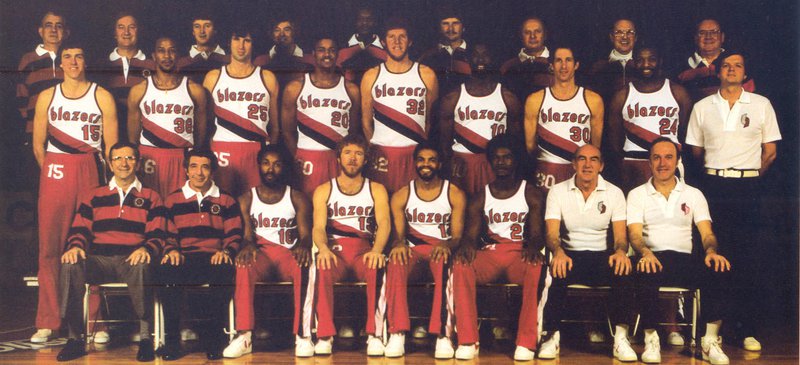
Lloyd Neal (1950-)
Lloyd Neal, according to Jack Ramsay
Lloyd Neal, a power forward at Tennessee State University, was selected in the third round of the 1972 NBA draft by the Portland Trail Blazers. Although undersized at 6 feet 7 inches, Neal held the Tennessee State record for total rebounds (1,667), an average of 17.9 per game. In his senior year, Neal averaged 38 points and 20 rebounds. He led his team to the NCAA playoffs for three consecutive years and Tennessee was named to the NCAA All-Tournament Team in both 1971 and 1972.
Neal made the NBA All-Rookie Team in 1973 and was runner-up to Bob McAdoo of Buffalo as the league’s Rookie of the Year. I was coaching Buffalo at the time and admired Neal for his toughness on defense, his rebounding at both boards, and his accurate jump shot from fifteen to seventeen feet.
When I became coach of the Blazers in 1976, the big forward position was solid with Neal, Maurice Lucas, and possibly Moses Malone, who was on the training camp roster. Neal had a gimpy left knee that limited his minutes, but he was strong as a bull, was in great physical shape, and proved to be a dedicated team player. He had two nicknames: Ice, because of the icepacks he wore so often on his injured left knee; and Bottom, in part because he was from Talbotton, Georgia, and also because of the expanse of his backside. He was good-natured, loved playing team basketball, and wanted desperately to be part of a winning team.
“I won every place I had been before I came to the NBA,” he said. “In the first three years I was in Portland, we never had a winning season and never made the playoffs. I knew in training camp that this team had a good chance of doing both. You can have good players and a good system, but if the players don’t buy into the system, it’s not going to happen. We all bought into the system [in 1976].”
Because of his knee problem, Neal didn’t do much distance running in preparation for training camp, and he was the only player to finish the mile run in over six minutes. My rule was that players who took longer than the allotted six minutes could run it again the next day or pay the dollar fine. (Neal remembers that he finished the run in 6:36 and elected to pay the fine.)
But rope-jumping was another matter. Neal had done a lot of jumping during his early years of basketball 3 training and could really make the rope sing. He finished the two-minute time limit with over 400 jumps—by far the best of any of his teammates.
Neal and Lucas put on a classic battle for the starting big-forward position. Luke won out. When I asked Neal to reflect back on my decision, he said, “I was all right with it. I knew I was going to get playing time whether I started or came off the bench. And I thought I could come off the bench better than Luke. I’m a team player…I just wanted to win.”
Neal loved the structure of the Blazers’ offense. There was always good ball movement, players knew where the shots were going to be, and every player was a skilled and willing passer. Neal was an effective jump shooter and Lucas a strong post presence. It was a great combination.
Neal also backed up Bill Walton at center. Although not as good a passer as Bill, Neal was a better jump shooter and learned to play effectively at both the forward and center positions. Walton, Lucas, and Neal proved to be a hard trio for opposing big men to handle. As compatible as the big men were, Neal thought that small forward Bob Gross was the key man on the team. “Bobby did everything well—he ran the floor great, made open shots, and was a great passer in our system.”
As the Blazers advanced in the playoffs, Neal remembers planning to be at his most effective coming off the bench. Every series demanded something a little different from him; and when it was determined that Philadelphia was the Blazers' opponent in the NBA Finals, he recalls saying to himself, “Bottom, you’ve got to do more than you’ve done yet.”
Neal’s numbers weren’t impressive during that regular season: 58 games played, 16.5 minutes a game, 6.8 points, and 4.4 rebounds. But he was very consistent and made the plays that counted when the team needed them most. Neal feels to this day that if had remained injury-free the Blazers could have won a number of NBA championships. When Neal’s playing career ended in 1979, he returned to Tennessee State to get the credits he needed to graduate, then began a career with the Internal Revenue Service in its Portland office.

Portland Trail Blazers, 1977-1978. OHS Research Lib.
